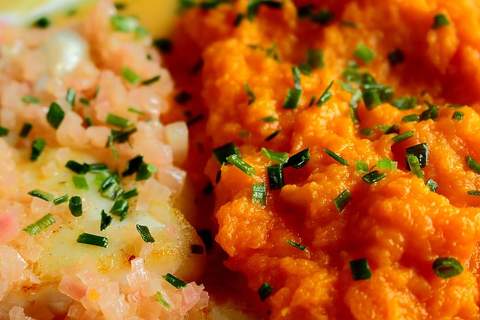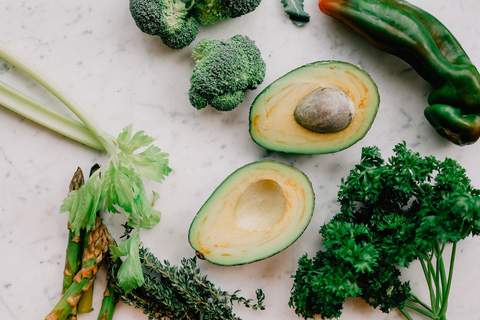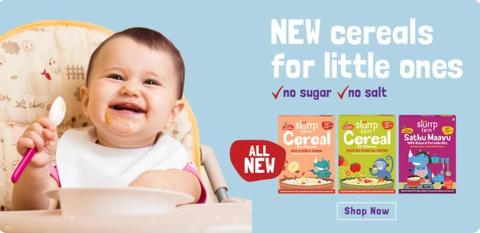By Vaishali Sudan Sharma
Introducing solids to my baby was an experience I can’t seem to forget. Even though my little one is not-so-little anymore, I still remember it as if it was yesterday. So, I thought it would be a good idea to share my notes from that phase? It might help fellow mums. Some of you might relate, while others might have better tips to share? In this blog post, I’ll also share – 6-8 months baby diet charts that were created with the help of Aditi Mehrotra, a renowned Delhi based nutritionist and dietician.

How many of you have been really nervous before introducing first foods to your baby? If I hear yes, I’d say- it’s completely understandable. When I started the first foods for my 6-month-old, I was filled with mixed emotions. I was happy that we achieved a big milestone, however and in the same breath, I was nervous as hell!
Starting solid foods is an exciting journey in itself. More for your baby than for the parent. Research shows that it is most beneficial to introduce semi-solid foods around 6 months of age.
Scroll down for our quick video for 6-8 months baby diet chart
During this time, don’t just stop breastfeeding or formula feeding altogether. I mean, I tried to stick to it. It’s not mandatory, but my lactation consultant encouraged me. I continued to provide the essential nutrition and hydration that my breastmilk or formula could fulfill. Simultaneously exposing your baby to a new world of varied flavors and nutrients is an awesome thing to happen at this stage. This is the transitional period in your baby’s taste development. Your baby will discard a few foods and most readily try or accept certain other types. The key is to introduce new foods and flavors gradually. Also, never give up on those recipes that your child discarded once or twice. Be persistent my lovelies. That’s the hack. Else, you will regret your child not trying lemon or beetroot at a later.
Healthy and yummy baby cereals for your little’s one growing tummy. Buy now!
Check out our how to maximize healthy taste development from first foods through our quick 6-8 months baby diet charts and video
Pro tips for 6 to 8-month baby diet chart:
1. Make sure to follow the 3-day rule. Note down the new ingredients introduced in the baby’s diet to look out for any allergic reactions.
2. It is common for babies to reject unfamiliar foods, as they wean. Be patient and keep offering a variety of foods. Do not worry, this is perfectly normal.
3. Please remember that some foods can irritate your baby’s digestive system. Avoid highly spicy or greasy foods. Also, avoid foods that could easily cause choking.
5. If your baby has several episodes of vomiting after trying new food, has diarrhea, develops a rash, or has swelling of the lips or eyes, he or she may be having an allergic reaction. Stop the feeding and call your pediatrician.
Check out 6 – 8 months diet chart video:
At 6 months:
An important mile marker, this is when your baby is ready to start semi-solids and baby food. This happens alongside slowly beginning to wean them from breastmilk.
For 6-months baby food weekly plans, click here.
At 7 months:
At 7 months, your little one’s tummy is slowly growing, adapting, and getting used to new flavors and textures. Kids tend to get bored with food very fast and with everything else going on with parenting, a fussy tantrum is something we all want to try and avoid! How then do we keep them interested, healthy, and happy?
For 7-month baby food chart weekly plans, click here.
At 8 months:
At 8 months, our babies and their tummies are still small and sensitive. Fortunately, the goodness of natural grains like ragi (aka finger millets) extends to the fact that it is easy to digest and is a great source of fiber, vitamins, and minerals for your baby. Ragi is a versatile staple food that you can continue to use to make a different recipe as your baby grows.
For 8-month baby food chart weekly plans, click here.
Here are a few important nutrient tips as you get started:
1. First food sources are often good baby cereals with no refined sugar or maida, mashed fruits and veggies. Breastmilk or formula provides the baby with all the important nutrients they need at this time.

2. Iron is important for the prevention of anemia (caused due to iron deficiency), proper growth, and development. Foods like oatmeal, or fortified cereal, pureed beans, and spinach are rich in Iron.

3. Calcium is important for bone and tooth health, blood clotting, muscle contraction (including the heart), and other processes. Good sources of calcium for a young eater, your new feeder includes breastmilk, infant formula, ragi (finger millets), and pureed leafy greens.
4. For your baby who is just starting the feeding process, pureed spinach, cauliflower, and beans are good sources of choline. Pureed spinach works best when combined with some other foods (apples, oats, avocados), and then you can introduce them softly cooked and chopped when the baby is ready to advance textures.
5. Protein is the building block of a body. While most of us eat plenty of protein, it is important to offer protein-rich foods. Breastmilk and formula are sources of protein for now.


